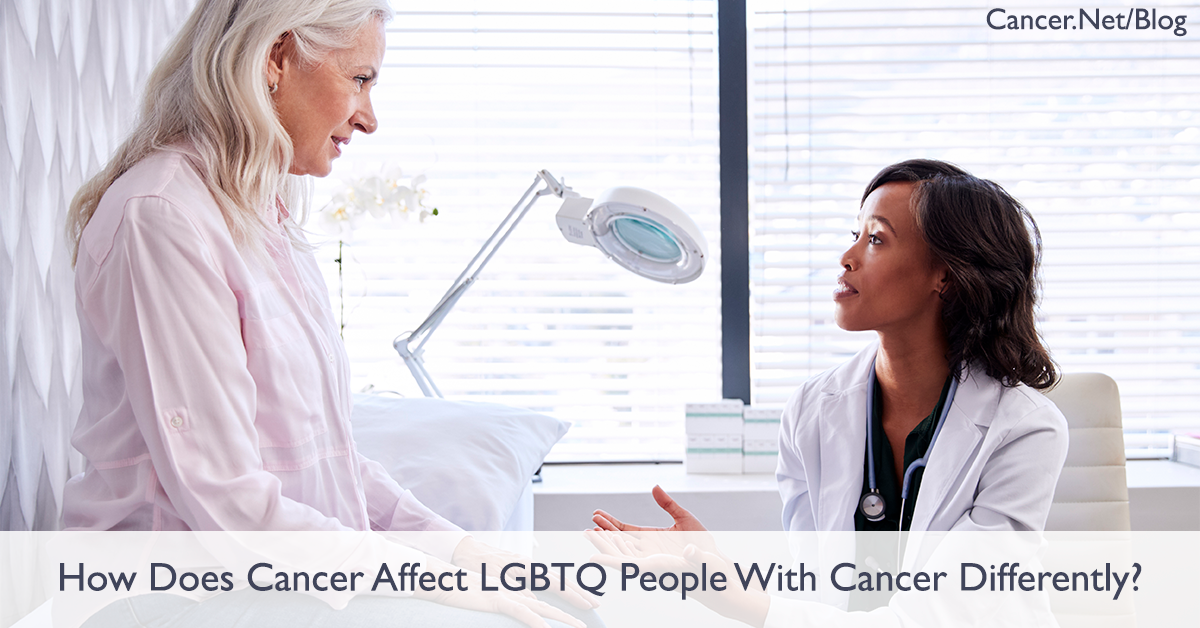
Matthew Schabath, PhD, is a cancer epidemiologist at the Moffitt Cancer Center in Tampa, Florida. Dr. Schabath’s career in cancer research spans 20 years, and he has published over 160 peer-reviewed publications. A significant portion of his research portfolio is focused on reducing health disparities that affect LGBTQ people with cancer. You can follow Dr. Schabath on Twitter.
A cancer diagnosis is scary, and it can be even scarier for a person who is part of a marginalized or underrepresented population such as the LGBTQ community. Research studies have shown that at least 7 types of cancer disproportionately affect LGBTQ populations, including anal cancer, breast cancer, cervical cancer, colorectal cancer, lung cancer, prostate cancer, and uterine cancer.
Which barriers to care do LGBTQ people with cancer face?
LGBTQ people with cancer often face a multitude of barriers when it comes to their cancer care. LGBTQ communities are at risk for poor access to cancer prevention, screening, and high-quality cancer care. LGBTQ people who are diagnosed with cancer also experience disparities in cancer survivorship, including poorer quality-of-life and cancer outcomes. Compared with heterosexual and cisgender people, LGBTQ cancer survivors report greater distress, report more relationship difficulties, are more likely to engage in substance use, are more likely to report poorer overall health, and experience lower satisfaction with their cancer care and treatment. People who are cisgender identify with the gender they were assigned at birth.
Moreover, LGBTQ people with cancer may hesitate to disclose their sexual orientation and gender identity (this is sometimes referred to as SOGI) to their health care provider because they are afraid of discrimination. This lack of disclosure may stop an LGBTQ person from including their partner and/or family of choice in their cancer care, which in turn increases the potential for poor survivorship outcomes. Each of these barriers shows that LGBTQ people with cancer have unique cancer care needs that can remain unaddressed through the typical ways that cancer care is delivered.
What resources are available to help LGBTQ people with cancer?
If you or a loved one are part of the LGBTQ community and have been diagnosed with cancer or are a cancer survivor, it is important to remember that you are not alone in your experience. More and more institutions that treat people with cancer have resources available for LGBTQ people.
If you’re not comfortable sharing your sexual orientation and gender identity, the internet can be a valuable resource. There are many excellent national networks, such as The Fenway Institute, National LGBT Cancer Network, and CancerCare, to name a few. These organizations are readily available to provide support services and information to manage the many difficulties of a cancer diagnosis for LGBTQ people.
What is being done to eliminate health disparities for LGBTQ people?
Despite the barriers and disparities that many LGBTQ people with cancer face, scientists and medical professionals are actively working toward identifying, understanding, and eliminating these health disparities. For instance, the National Institutes of Health (NIH) has a Sexual & Gender Minority Research Office that is advancing rigorous research on the health of LGBTQ populations. Additionally, strong recommendations for training health care providers in the health care needs of LGBTQ people has been issued from many medical organizations, including the Institute of Medicine, the American Association of Medical Colleges, NIH, the American Society of Clinical Oncology, the Joint Commission, and the Agency for Healthcare Research and Quality.
Because of the efforts being made to eliminate health disparities, identifying and addressing the unique cancer care needs of LGBTQ people will start to improve. This will hopefully lead to long-term improvements in clinical practice and reduce cancer disparities among LGBTQ people, from screening to diagnosis, treatment, and survivorship.






